Schefflera Amate, a lush and vibrant plant known for its glossy foliage, has become a favorite among plant enthusiasts and interior designers alike. In this comprehensive guide, we’ll delve into its origins, ideal care conditions, pruning techniques, and the myriad ways it enhances both indoor spaces and well-being.
Origins and Species
Schefflera Amate’s journey begins in the lush rainforests of Australia and New Guinea, where it thrives in the warm, humid conditions. Understanding its native habitat provides crucial insights into replicating the ideal conditions for this tropical beauty in your home.
Native Habitat and Varieties
The native habitat of Schefflera Amate is characterized by rich, well-draining soil, and filtered sunlight. Recreating these conditions is essential for its optimal growth. Varieties of Schefflera, such as the classic Schefflera, the Variegated Schefflera, and the Umbrella Tree, offer distinct features to cater to various preferences.

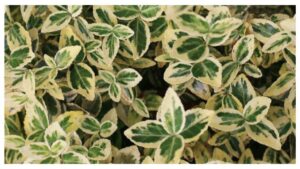
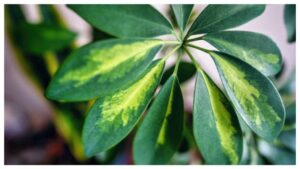
Replicate the rainforest environment by placing your Schefflera in a well-draining potting mix, ensuring it receives bright, indirect sunlight. Remember, each variety may have slightly different care requirements, so tailor your approach accordingly.
Planting and Care
Schefflera Amate’s robust nature makes it an excellent choice for both novice and experienced plant enthusiasts. Let’s delve into the specifics of planting and caring for this magnificent plant.
Ideal Conditions for Growth
Creating an environment that mimics the tropical rainforests of its origin is key to Schefflera success. Start by selecting a well-draining potting mix rich in organic matter. The pot should have drainage holes to prevent waterlogging, ensuring the roots stay healthy.
Position your Schefflera Amate in bright, indirect light. While it can tolerate lower light levels, placing it near a window with filtered sunlight enhances its growth. Keep the temperature consistently warm, ideally between 65°F to 80°F (18°C to 27°C).
Watering and Fertilizing Tips
Proper watering is crucial for Schefflera well-being. Allow the top inch of the soil to dry out before watering, preventing overwatering and root rot. During the growing season (spring and summer), water more frequently, and reduce watering in the dormant period (fall and winter).
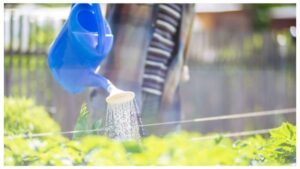
Fertilize your Schefflera Amate every 4-6 weeks during the growing season, using a balanced liquid fertilizer. Dilute the fertilizer to half the recommended strength to avoid nutrient burn. Always follow the specific instructions on the fertilizer packaging.
Pruning Techniques
Pruning is a vital aspect of Schefflera care, contributing to its overall health and aesthetic appeal. Let’s explore why pruning is essential and how to do it effectively.
Importance of Pruning
Pruning serves multiple purposes for Schefflera Amate. It helps maintain a desirable shape, removes dead or damaged foliage, and promotes air circulation, reducing the risk of pests and diseases. Regular pruning also encourages new growth, resulting in a lush and bushy appearance.
Step-by-Step Pruning Guide
- Inspect Your Plant: Begin by closely examining your Schefflera. Identify any yellowing or dead leaves, as well as areas where the plant appears overgrown or leggy.
- Gather Pruning Tools: Use clean, sharp pruning shears or scissors to ensure a smooth and precise cut. Disinfect the tools before and after use to prevent the spread of diseases.
- Remove Dead or Yellowing Leaves: Trim any dead or yellowing leaves at their base. This not only improves the plant’s appearance but also directs its energy toward healthy growth.
- Shape the Plant: If your Schefflera Amate is becoming too leggy or uneven, shape it by trimming back longer stems. Cut just above a leaf node to encourage branching.
- Manage Size: If your space is limited, control the size of your Schefflera by pruning back taller stems. This ensures a compact and manageable growth habit.
- Regular Maintenance: Schedule regular pruning sessions, especially during the growing season, to keep your Schefflera in optimal condition.
By following these pruning techniques, you’ll maintain a healthy and visually appealing Schefflera Amate.
Common Pests and Diseases
Ensuring the well-being of your Schefflera Amate involves vigilance against potential pests and diseases. Let’s explore how to identify these issues and the best methods for prevention and treatment.
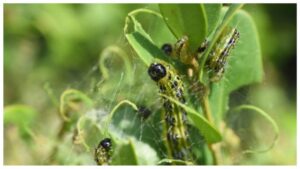
Identification and Prevention
- Spider Mites: These tiny pests may create fine webbing on your plant and cause stippling on the leaves. Increase humidity around your Schefflera Amate, regularly misting its foliage, and use insecticidal soap for control.
- Scale Insects: Identified by small, waxy bumps on stems and leaves, scale insects can be removed manually or treated with neem oil. Regularly inspect the undersides of leaves where they often hide.
- Root Rot: Overwatering can lead to root rot, causing wilting and yellowing of leaves. Ensure proper drainage, use well-draining soil, and let the top inch of soil dry out before watering again.
Treatment Options
- Insecticidal Soap: Use a mild, insecticidal soap to control spider mites and other soft-bodied pests. Apply it according to the product instructions, ensuring thorough coverage.
- Neem Oil: Neem oil is an effective organic solution for treating scale insects. Dilute according to instructions and apply to affected areas, including the undersides of leaves.
- Root Rot Prevention: If root rot is suspected, remove the affected plant from its pot, trim away affected roots, and repot in fresh, well-draining soil. Adjust your watering practices to prevent future occurrences.
Schefflera Amate in Interior Design
Beyond its botanical merits, Schefflera Amate stands as a versatile design element, adding charm and vitality to indoor spaces. Let’s explore how this plant can elevate your interior design.

Popular Uses
- Statement Piece: Position a large Schefflera Amate as a focal point in a room, making it a captivating centerpiece. Its bold, glossy foliage creates an eye-catching display.
- Room Divider: Use Schefflera to define spaces within a room. Its lush greenery can act as a natural divider, adding a touch of privacy without compromising an open feel.
- Vertical Garden: Incorporate Schefflera into vertical gardens. Combine it with other plants to create a living wall, bringing nature indoors and enhancing aesthetic appeal.
Aesthetic Benefits
- Air-Purifying Elegance: Schefflera Amate not only looks stunning but also contributes to better air quality by filtering out common indoor pollutants. Its broad leaves efficiently remove airborne toxins.
- Biophilic Design: Embrace the principles of biophilic design by introducing Schefflera Amate. Connecting with nature within indoor spaces has proven psychological benefits, fostering well-being and reducing stress.
Propagation Methods
Discover the joy of expanding your Schefflera Amate family by exploring various propagation techniques. Whether you’re a budding horticulturist or looking to share the beauty of Schefflera Amate with friends, propagation is a rewarding endeavor.
Seed Propagation
- Collecting Seeds: Harvest seeds from mature Schefflera Amate pods. Allow them to dry before storing in a cool, dark place.
- Sowing Seeds: Plant seeds in a well-draining potting mix. Keep the soil consistently moist and maintain a warm environment for germination.
- Transplanting Seedlings: Once seedlings have several leaves, transplant them into individual pots. As they grow, gradually acclimate them to their final indoor environment.
Stem Cutting Techniques
- Selecting Healthy Cuttings: Choose a healthy, mature stem for cutting. Ensure it has at least a few leaves and a node (where leaves attach to the stem).
- Preparing the Cutting: Trim the stem just below a node, using clean, sharp scissors or pruning shears. Remove any excess leaves, leaving a few at the top.
- Rooting Process: Place the cutting in a container with water or directly into a well-draining potting mix. Roots should develop within a few weeks.
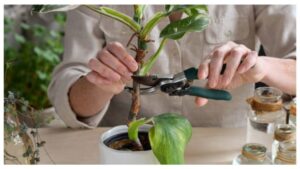
Propagation allows you to share the beauty of Schefflera Amate with friends or create additional plants for different spaces in your home.
Benefits of Schefflera Amate
Explore the myriad advantages of cultivating Schefflera Amate beyond its visual allure. This resilient plant offers a range of benefits, contributing to both your physical environment and mental well-being.
Air-Purifying Qualities
- Toxin Removal: Schefflera Amate is an excellent air purifier, effectively removing common indoor pollutants such as benzene, formaldehyde, and trichloroethylene.
- Improved Indoor Air Quality: By introducing this plant into your living or workspace, you contribute to a healthier indoor environment, reducing the risk of respiratory issues and promoting overall well-being.
Psychological Benefits
- Stress Reduction: Biophilic elements, like Schefflera Amate, have been linked to reduced stress levels and improved mood. The presence of greenery indoors fosters a sense of tranquility.
- Productivity Boost: Incorporating plants into your workspace, including Schefflera Amate, can enhance concentration and productivity. The calming effect of nature promotes a positive work atmosphere.
Are Schefflera Amate Toxic to Pets and Children?
Schefflera Amate plants are considered toxic to pets and children if ingested. The plant contains calcium oxalate crystals, which can cause irritation and swelling in the mouth, throat, and digestive tract. It is important to keep Schefflera Amate plants out of reach of pets and children to prevent accidental ingestion and potential harm.
It is recommended to contact a veterinarian or healthcare provider if ingestion occurs, and to monitor for symptoms such as drooling, difficulty swallowing, vomiting, or diarrhea. Keep the plant in a secure location and educate family members about the potential dangers of Schefflera Amate plants. Remember that prevention is key to keeping your loved ones safe from plant toxicity.
Conclusion
In this comprehensive guide, we’ve explored the enchanting world of Schefflera Amate, uncovering its origins, ideal care conditions, pruning techniques, and its role as a design element. From propagation methods to the multitude of benefits it offers, Schefflera Amate stands out as a resilient and versatile plant.
Whether you’re a seasoned plant enthusiast or just starting your green journey, incorporating Schefflera Amate into your living or workspace brings more than just visual appeal. Its air-purifying qualities, stress-reducing benefits, and adaptability make it a valuable addition to any indoor environment.
As you embark on your journey with Schefflera Amate, remember to tailor your care approach based on its variety and individual needs. Regularly check for pests, employ proper watering practices, and, if you’re feeling adventurous, try your hand at propagation to share the joy of this wonderful plant.
Now that you’re equipped with the knowledge to nurture and enjoy Schefflera Amate, consider it not just as a plant but as a companion that enhances your surroundings and contributes to your overall well-being.
Frequently Asked Questions
How often should I water Schefflera Amate?
Proper watering is crucial. Check the top inch of the soil, and when it feels dry, it’s time to water. Be mindful not to overwater, as Schefflera Amate prefers slightly drier conditions.
What pests commonly affect Schefflera Amate?
Watch out for spider mites and scale insects. Regularly inspect the leaves and stems for signs of infestation, and treat promptly using insecticidal soap or neem oil.
Can Schefflera Amate thrive in low-light conditions?
While it prefers bright, indirect light, Schefflera Amate can tolerate lower light levels. However, for optimal growth and appearance, provide it with as much indirect sunlight as possible.
How do I propagate Schefflera Amate from cuttings?
Propagation through stem cuttings is a popular method. Choose a healthy stem, cut just below a node, and place the cutting in water or a well-draining potting mix. Roots should develop within a few weeks.
